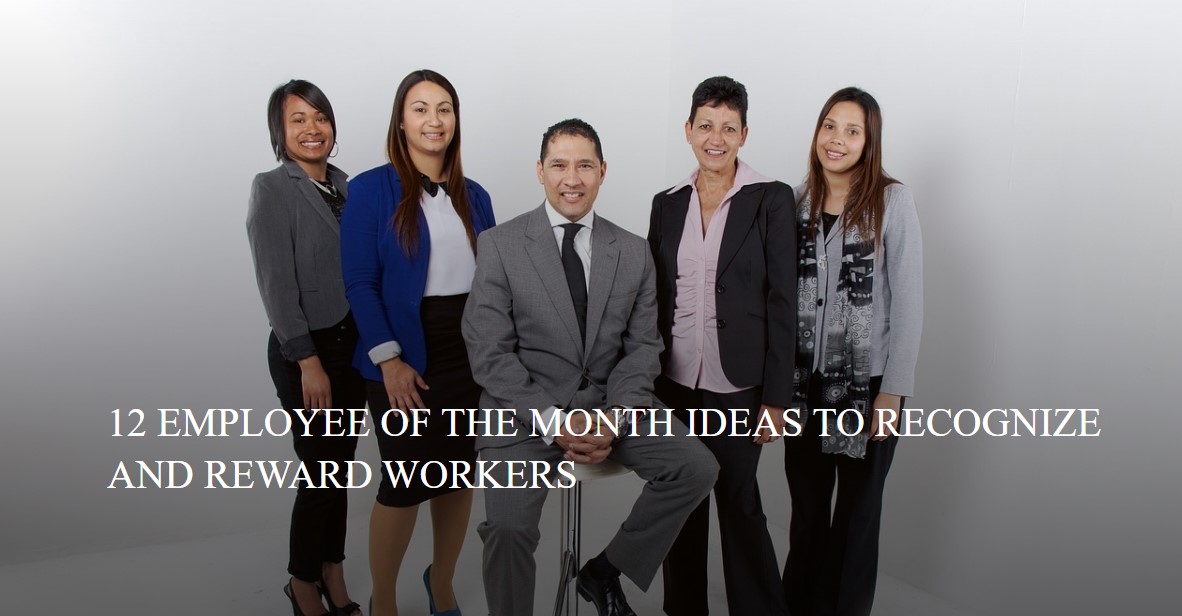Summary. Companies need strong employee recognition programs in order to have a productive and healthy workforce. These programs should include social, formal, and informal recognition.
The strongest companies have cultures of gratitude and appreciation, and you can foster that in your own organization by implementing employee recognition programs.
In this article, we’ll go over what employee recognition does for companies, the different forms of recognition, and examples of employee recognition programs you can use for inspiration as you create your own.
Key Takeaways
-
Employee recognition is essential to a strong company brand and good employee engagement and retention.
-
The three types of employee recognition are social, informal, and formal.
-
Parties, employee-of-the-month awards, and monetary bonuses are a few examples of employee recognition programs.
What Is Employee Recognition?
Employee recognition is the practice of encouraging and rewarding employees for good work. It’s also showing employees that they’re noticed and valued members of the organization – not just nameless cogs on a wheel.
Recognition can come with tangible rewards, but it doesn’t have to – it can be as simple as acknowledging people in the hallway or thanking them for completing a task for you.
Ideas for Employee Recognition Programs
-
Employee of the month. Whether you’re running a small team or an entire organization, set up a way to recognize different employees on a regular basis.
Recognize the person by publicly sharing why they’re being honored and giving them a token of appreciation (a gift card to a coffee shop or a special company-branded water bottle that only these employees get).
-
Peer bonuses. Getting recognized by your peers can be incredibly impactful as well. Create a way for employees to give their colleagues a pat on the back for a job well done, whether that’s helping cover for someone, completing a big project, or professionally responding to a difficult customer.
Some companies have pots of money employees can use to give each other small bonuses or company store credits. Others create a space to give verbal recognition in weekly meetings. Whatever you choose, give employees opportunities to brag about each other.
-
Values-focused recognition. A great way to recognize employees and promote your organizational values is to create a program that works on identifying and honoring employees who exemplify the company’s values.
-
Spur-of-the-moment gifts. Give your managers leeway in their budgets to award their employees with cash bonuses, a meal out, or small gifts whenever appropriate.
They can use this as a tool for encouraging their team members when they make a deadline, complete a tough project, or come up with a time- and money-saving system.
-
Innovation award. If you want to encourage your employees to try new things, reward – don’t punish – them for doing so. Regularly recognize workers who created a new process, fixed an old pain point, or came up with a new strategy.
Even simply verbally honoring them and giving a small token of appreciation will go a long way in establishing a culture of innovation.
-
Celebratory party. Throw a party for your employees to celebrate the end of a busy season, the launch of a product, or some other accomplishment. This could be as simple as a catered lunch or as elaborate as a themed event their families are invited to.
-
Honoring milestones. It’s a big deal when your employees have been working for you for five, ten, or 20 years, when they get a promotion, or when they retire. Avoid letting their dedication go unnoticed by creating a program for tracking and honoring milestones.
Provide verbal recognition as well as a physical token of appreciation – make sure it’s a valuable enough item that the honoree feels appreciated, not insulted by a cheap ecard or generic paperweight.
-
Creating personal connection. This one isn’t so much a program as an attitude or personal practice, but it’s still effective. If you’re a leader of any kind in an organization, recognize and acknowledge every person under you whenever you see them.
This means if you’re walking down the hallway, smile, nod, and greet them by name if appropriate. This will take a lot of work, but it’s worth it to help your employees feel seen and valued.
Types of Recognition
There are several types of recognition, and it’s important to use all of them in some form in your organization.
-
Social recognition. Also called peer-to-peer recognition, this form of recognition comes from one coworker to another, not necessarily from a boss to a coworker. This type of recognition is a way for an employee to thank a colleague for their help or to give them a pat on the back for finishing a difficult task.
-
Informal recognition. A shout-out is a form of informal recognition – an off-the-cuff recognition of someone’s efforts on a day-to-day level. Informal recognition can be given verbally, but it can also be a boss bringing in donuts for their team or a small bonus that a manager can give anyone at any time they want.
-
Formal recognition. This is what often comes to mind when people think of recognition programs, and it includes annual raises and bonuses, anniversary parties, and retirement gifts. Formal recognition is the bare minimum as far as recognition programs go.
Types of Rewards
Usually, recognition comes with a reward – especially if it stems from a recognition program. There are several different types of rewards you can give.
-
Verbal affirmation. This is the easiest type of recognition to give, and it should be given generously by company leaders and managers.
The most powerful verbal affirmation is specific, so say something like, “I really appreciate all the little things you do to keep this office organized,” or, “You did a great job responding to that customer this morning – way to keep your cool.”
-
Public recognition. Even if they act like they have done, everyone feels honored when their leaders compliment them in front of their peers. Recognize employees during meetings or send out a group message recognizing an employee’s efforts and contributions.
In other words, don’t just walk up to their desk and say, “Congratulations, you’re the employee of the week.” Brag on them and honor them in front of their coworkers.
-
Monetary reward. Everyone loves money, and bonuses – even small ones – can go a long way in helping employees feel valued. Gift cards can also be an effective way to recognize staffers’ hard work.
-
Celebratory event. Throwing a party – big or small – can be a great way to show employees you appreciate their hard work. It’s also a great way to mark a tenure milestone, promotion, or retirement.
-
Gift or memento. A plaque, high-quality backpack or water bottle, or nice watch can be an excellent token of your appreciation. Just make sure its value corresponds to the magnitude of what you’re recognizing – otherwise, it will come off as cheap and insulting.
The Benefits of Employee Recognition Programs
Having a strong employee recognition program will boost morale and employee engagement. In turn, these will increase the company’s productivity and decrease turnover costs.
-
Boosts morale. When employees feel valued and recognized, they usually enjoy their work more. This results in happier, healthier, and more productive employees, which is good for a company in many ways.
-
Puts value on excellence. Employees aren’t going to be very motivated to do excellent work if they feel like no one will notice. By honoring excellence, you’ll demonstrate that good work is not only celebrated but also vital to success in your organization.
-
Nurtures teamwork. When employees are encouraged to recognize and honor each other, the culture will shift toward teamwork and camaraderie rather than unhealthy competition. This benefits not only individual teams but the organization as a whole.
-
Improves engagement. Strong recognition programs can be a huge boost to employee engagement. Workers are more likely to feel like their efforts matter and that they are valuable members of a team, driving them to become more invested in that team. This is important to both a company’s productivity and its financial health.
-
Strengthens company brand. Recognition programs built around company values increase employee buy-in to those values and increased buy-in results in a strong company brand. This is not only important for selling products but also helps you attract and retain talent more easily.
-
Increases retention. Employees who feel appreciated are more likely to be content with their jobs than those who feel they’re taken for granted. This helps companies reduce turnover costs and increase productivity.
Employee Recognition FAQ
-
What are the three types of recognition?
The three types of recognition are:
-
Social recognition.
-
Formal recognition.
-
Informal recognition.
-
-
What are some examples of recognition?
Some examples of recognition are an employee of the month award, a bonus, or a catered lunch. These are all great ways of recognizing your employees’ hard work.
-
What are professional compliments?
Professional compliments are statements that point out something specific that an employee did at work and your appreciation for it. For example, a professional compliment would be, “That report you wrote was clear, concise, and easy to read. It made my job a lot easier. Thank you for putting so much effort into that.”
-
How do you write an employee recognition letter?
You write an employee recognition letter by:
-
Addressing them personally.
-
Naming specific achievements or actions you want to recognize.
-
Noting the impact of their actions.
-
Thanking them for their hard work.
-
Signing off professionally.
-
References
- Employee Recognition
- How To Write A Letter Of Recommendation For An Employee
- Employee Appreciation Quotes
- Employee Appreciation Letters
- How To Take Care Of Your Employees
- How Tap Into The Collective Power Of Your Employees
- How Bosses Can Have A Positive Career Impact
- How To Increase Profit + Productivity Via Employees Happiness
- Employee Recognition
- What To Do For National Intern Day?
- Retirement Gifts For Employees
- Best Ways To Celebrate Boss' Day
- Ideas For Take Your Child To Work Day
- Ideas For Professional Admin Day
- Ideas For Worker Appreciation Day
- How To Show Employee Appreciation
- Ideas For Employee Of The Month





